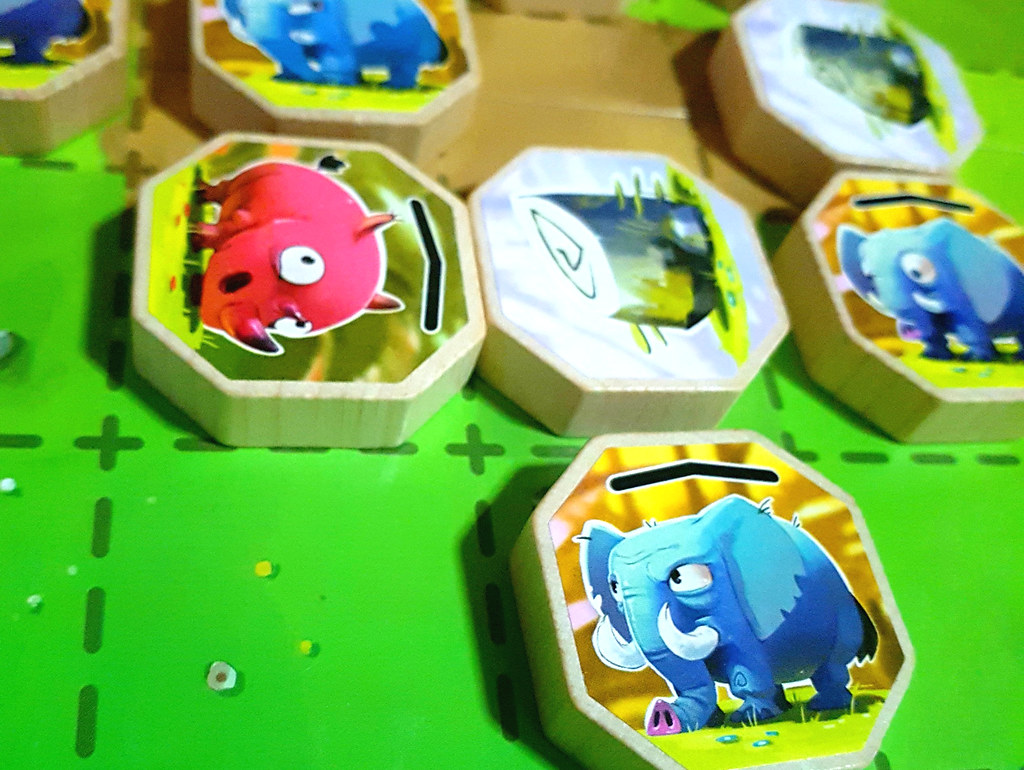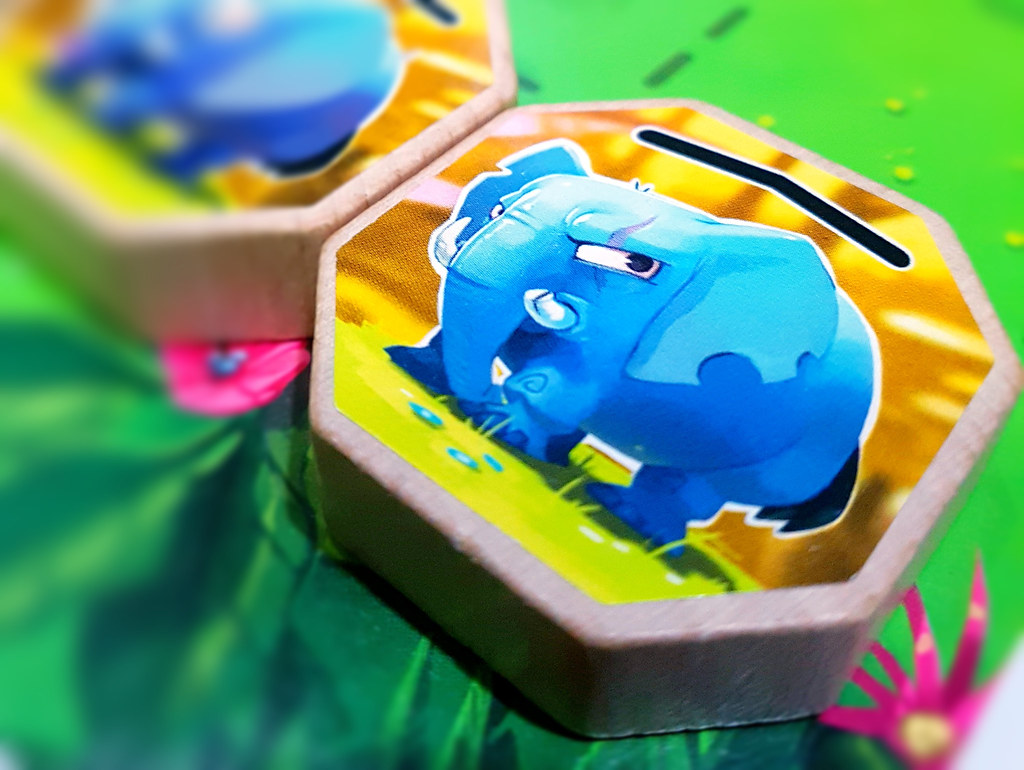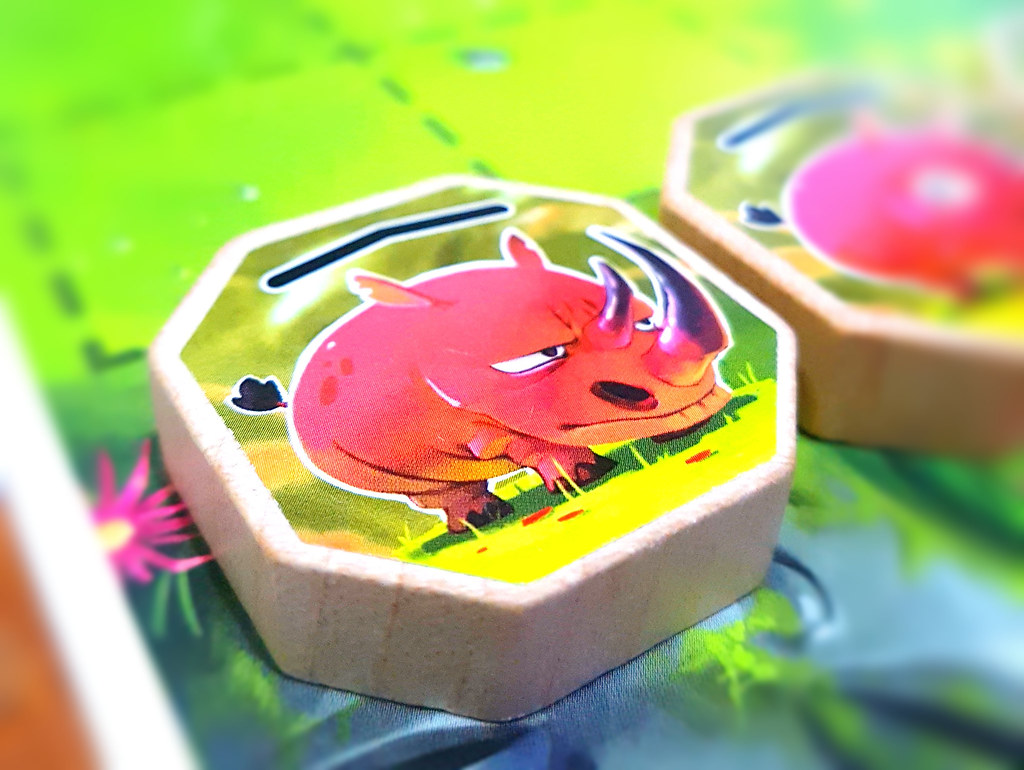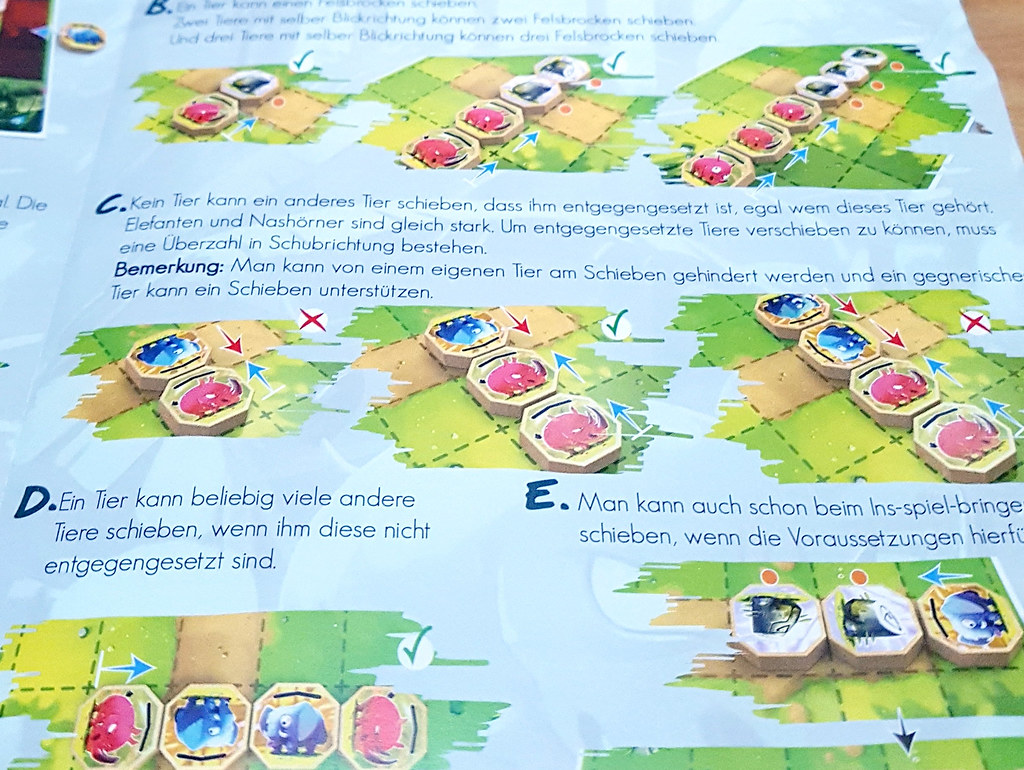Siam was located in the present-Thailand, has been an inspiration for many masterpieces including this board game. Join our safari to the heart of the forest in the ancient kingdom to watch the intense rivalry between two marvellous creatures of the earth: the rhinos and the elephants.
A bit background about Siam
There was a time when the rhinos and the elephants wanted to know who’s the strongest between them. In order to end the never-ending quarrel, they decided to do a small game. Both factions have to compete to be the first one to push the big boulders out of the border. Who will emerge victorious?
How to play Siam
Each player will represent each animal side and gain five animal tokens; each animal token will have an arrow to identify which side it is facing. One will claim the glory by being the first one to push one out of three big boulders. It sounds simple but with only brute force, you will not win the game.
During his or her turn, the player can pick one out of five options available; the first one is to put an animal token into play. The player may put the animal token in the perimeter of the field. The second is to move the animal token in the field to an adjacent space; the token cannot move diagonally. When moving the token, the orientation can be shifted, too.
The next one is to change the orientation of the token without moving the token; this is important if you need to change the side where the animal token faces. The fourth option is to take an animal token in the border area out of play. The last one is the main element of this game: to push another token (boulder or animal token) to the direction where the pushing token is facing.
The direction of the animal token is really important to decide whether it can push and can be pushed by other tokens or not; if the same amount of animal tokens faces each other, they cannot push towards the direction they are facing. The player can push any number of animal tokens which do not face towards the pushing token. The boulder(s) can only be pushed by the same amount of animal tokens facing towards it.
When the animal token pushes the boulder out of the field, then the game ends. The player who pushes the boulder does not automatically win the game; if his or her own animal token is facing the boulder and is the closest one to it, then he or she wins the game. However, if the other animal token owned by the opponent is the one facing the boulder, this animal is considered to push it out of the border and thus the opponent wins the game.
The overall experience of Siam
Siam is an abstract game with grid movement as its core mechanism. This game grinds your brain because you have to plan a solid strategic move in order to win the game. The mechanism is well-designed and it gives no room for luck. One false movement may result in a loss. The system to decide whether this or that token can be pushed is easily understood. The rule sheet explains how to play really clear and it gives several case examples to illustrate the situation. This makes it easier to teach another player.
In my first several sessions, the games ended real quick because I was not aware of the depth of this game; understanding the strategy and how to react to the opponent’s move is the key to success. After I and my opponents got the bigger picture, one gaming session needs approximately 15-20 minutes.
My opinion
Siam feels like the lite version of chess; it has the same strategic depth without the elimination element. Each move counts to gain the glory. This game is really suitable for those who want a short abstract game packed with strategy and tactic. The board is quite small and it has two sides; the other side is for the advanced players who want more challenge. This game does not involve any luck at all; players who like dice or any other form of randomised outcome might not find this game interesting.
The travelling version, however, looks better and more beautiful because of its sculptures instead of only using the wood tokens. However, the illustration wrapping this version is beautifully crafted as well. This really helps to attract more casual and younger audiences.
The game is carefully designed and I do not find any imbalance in the game. Neither the first player nor the second player gets a clear advantage; you really need to be good at analysing the whole board. Siam, despite being a deep abstract game, is pretty good to be a filler. It’s really easy to learn and to explain; I would say that this game can be a gateway game, too. I am not a fan of the advanced board; the game with the normal board is hard enough already so you probably want to stick with it while playing the game.
Overall, I really like this game. It’s not that light but it’s easy to play yet hard to master. The illustration really draws attention. It’s a good filler and gateway game for an abstract game.
I am a full-time food technologist during weekdays. However, when the calendar hits weekends, I transform into an avid board gamer. I am a hardcore Legend of the Five Rings (L5R) LCG player from Fantasy Flight Games (FFG). Current hobby: buying board games. My shelf of shame’s list is getting longer, thanks to you, Kickstarter.









